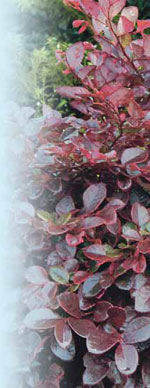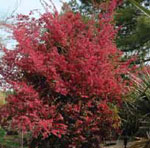Versatile Loropetalum Creates a Dramatic Display
go.ncsu.edu/readext?232818
en Español / em Português
El inglés es el idioma de control de esta página. En la medida en que haya algún conflicto entre la traducción al inglés y la traducción, el inglés prevalece.
Al hacer clic en el enlace de traducción se activa un servicio de traducción gratuito para convertir la página al español. Al igual que con cualquier traducción por Internet, la conversión no es sensible al contexto y puede que no traduzca el texto en su significado original. NC State Extension no garantiza la exactitud del texto traducido. Por favor, tenga en cuenta que algunas aplicaciones y/o servicios pueden no funcionar como se espera cuando se traducen.
Português
Inglês é o idioma de controle desta página. Na medida que haja algum conflito entre o texto original em Inglês e a tradução, o Inglês prevalece.
Ao clicar no link de tradução, um serviço gratuito de tradução será ativado para converter a página para o Português. Como em qualquer tradução pela internet, a conversão não é sensivel ao contexto e pode não ocorrer a tradução para o significado orginal. O serviço de Extensão da Carolina do Norte (NC State Extension) não garante a exatidão do texto traduzido. Por favor, observe que algumas funções ou serviços podem não funcionar como esperado após a tradução.
English
English is the controlling language of this page. To the extent there is any conflict between the English text and the translation, English controls.
Clicking on the translation link activates a free translation service to convert the page to Spanish. As with any Internet translation, the conversion is not context-sensitive and may not translate the text to its original meaning. NC State Extension does not guarantee the accuracy of the translated text. Please note that some applications and/or services may not function as expected when translated.
Collapse ▲
Purple Diamond ™
Plant Development Services Inc ©
Few plants are as useful in so many landscape situations as this beautiful
spring-flowering shrub. You can’t go wrong with Chinese fringe flower,
though white or pink flowers and green, variegated or burgundy leaves
make it hard to decide on just one.
It can serve in foundation plantings, tall hedges, borders and low screens. Left alone, this evergreen shrub will grow 10 feet tall and wide with a thick, layered appearance. Compact forms exist and more are being developed. It will endure pruning, but is beautiful left to grow naturally in a sunny or partially shaded spot.
On a large mature plant, one option is to remove lower limbs, revealing a
beautiful structure and pleasant spot to relax. This technique will produce
a delightful small tree that creates as much drama as a Japanese maple.
Easy to find at garden centers and nurseries, Loropetalum prefers acid to neutral soil (leaves may yellow in alkaline soil). Transplanting from containers is no problem, but give these plants adequate moisture during the first season to ensure survival.

Loropetalum chinense ‘Pipa’s Red’
JC Raulston Arboretum ©
Varieties (discovered in nature) and cultivars (found in cultivation)
growing at the JC Raulston Arboretum give a glimpse into the wide world
of Loropetalum chinense. Names such as ‘Green Elf,’ ‘Blush,’ and ‘Zhuzhou Fuchsia’ tell of colors from far and near. Excitement seems to drip off plant tags listing ‘Snow Dance,’ ‘Sizzlin’ Pink,’ ‘Daybreak’s Flame’ and ‘Fire Dance.’
Loropetalum flowers in late winter or spring with long, narrow petals that resemble soft ribbons. These strap-shaped flowers are common to the witch hazel family, Hamamelidaceae, and can be fragrant. Each flower consists of
only four petals. But because three to six flowers cluster together at many
points along the branches, they create a spectacular overall display.
This plant flowers in the spring, so wait until after flowering to prune.
Scattered flower production may occur in fall, but don’t be alarmed. This shrub is just pleasantly reminding you to wait for more flowers come spring,
and come they will.


